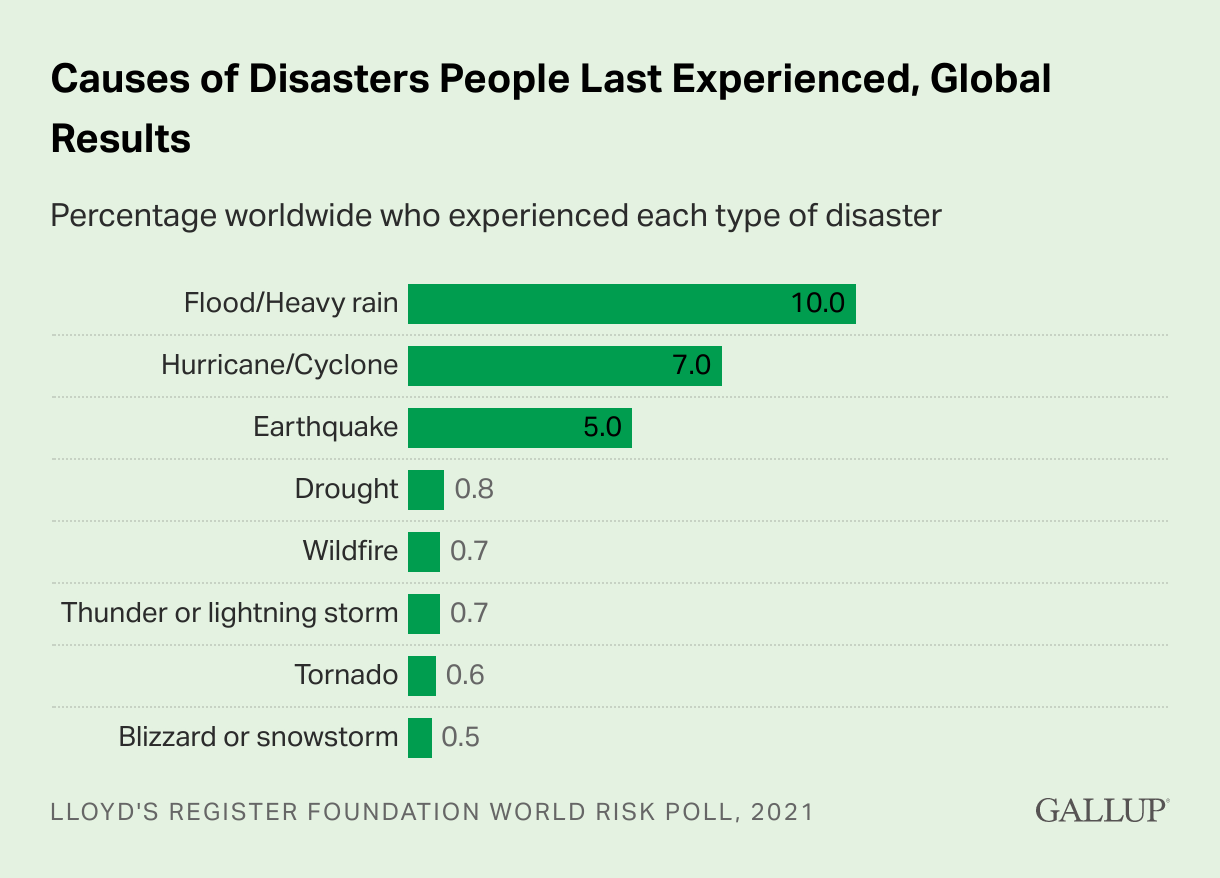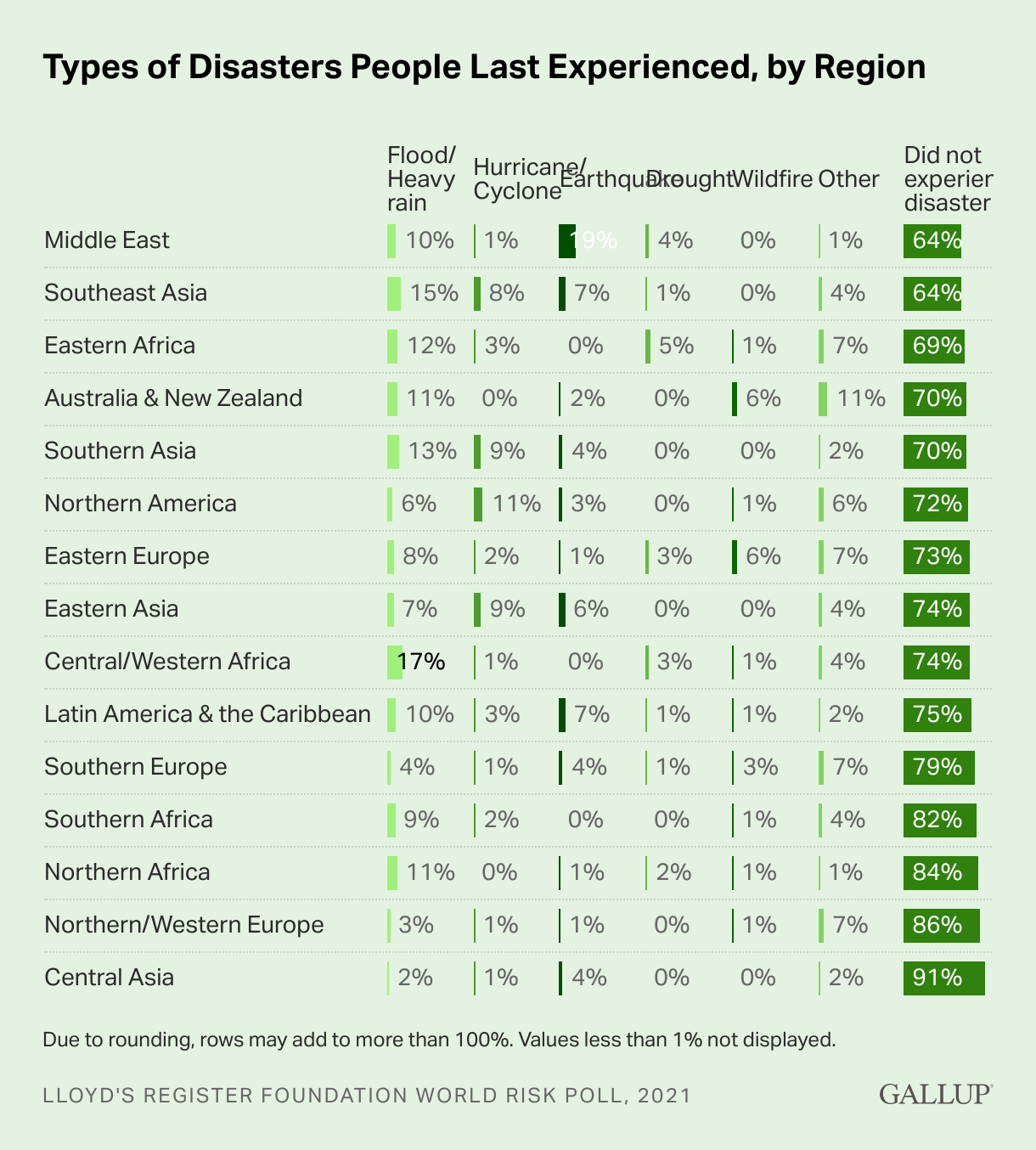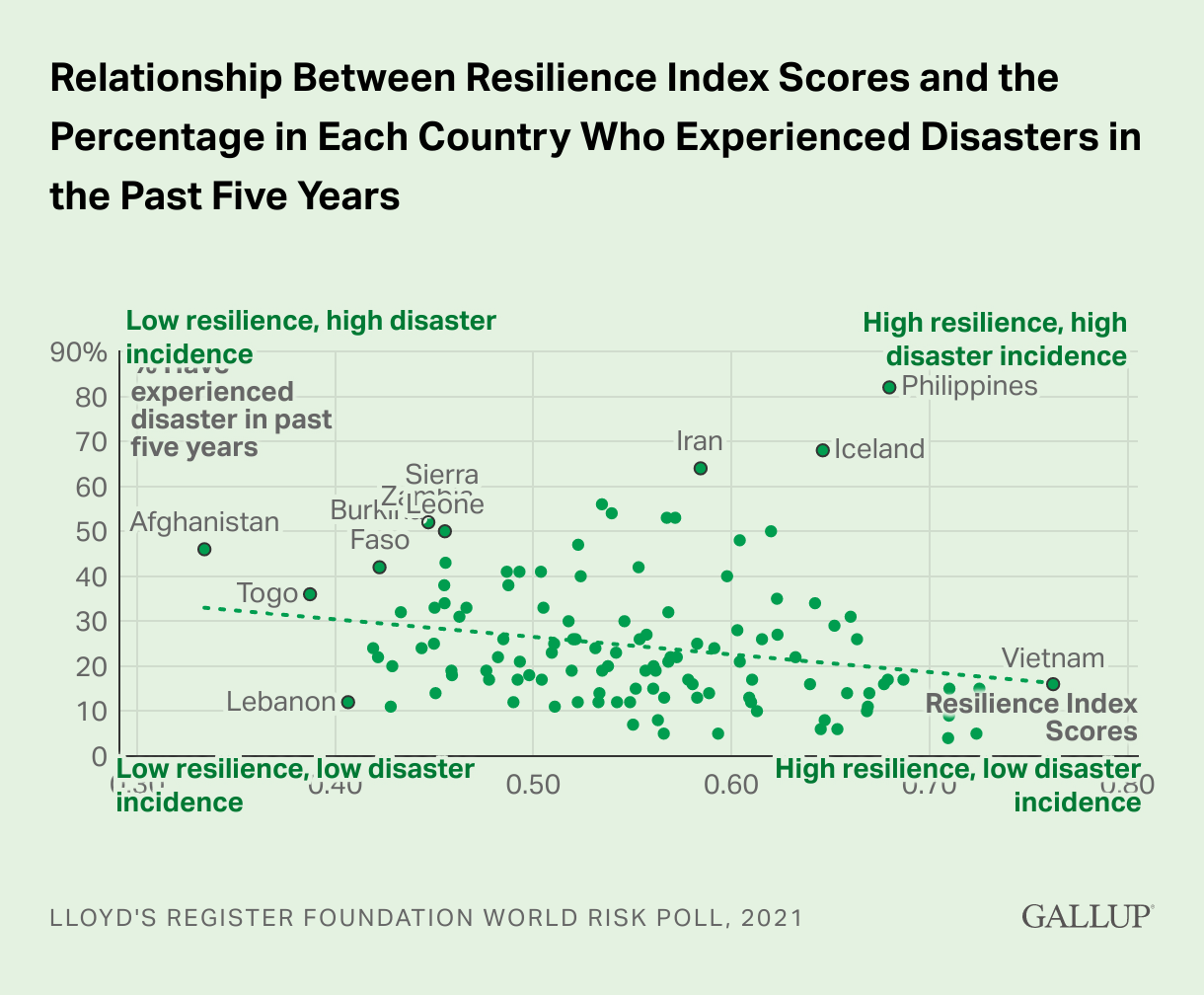Please help us improve PreventionWeb by taking this brief survey. Your input will allow us to better serve the needs of the DRR community.
World Risk Poll: Most disaster-exposed among least resilient
This article is the second in a two-part series that examines key findings on global resilience from the 2021 Lloyd's Register Foundation World Risk Poll. Much of the following is excerpted from the latest report, A Resilient World? Understanding Vulnerability in a Changing Climate.
As rising global temperatures increase the threat from weather-related hazards around the world, the latest World Risk Poll report suggests people who are more exposed to disasters that arise from natural hazards like these are less able to cope with them.
In addition to attempting to gauge people's capacity to handle the difficulties they face, or their resilience, the 2021 World Risk Poll asked nearly 126,000 people in 121 countries and territories about their experiences with disasters related to natural hazards such as floods, droughts or cyclones.
The relationship between people's experiences with disaster and their resilience provides insight into where interventions are most needed to shore up resilience among populations most likely to experience hazards.
Key Findings
More than one in four people worldwide experienced a disaster caused by some type of natural hazard in the past five years
Globally, 27% of people said they had experienced some type of disaster in the past five years. Flooding or heavy rains was the most common cause, named by 10% worldwide, followed by hurricanes or cyclones (7%) and earthquakes (5%). No other single type of disaster was named by more than 1%; the next most common were droughts (0.8%), wildfires (0.7%) and thunder or lightning storms (0.7%).

Experiences with disasters caused by natural hazards were most common in the Middle East and Southeast Asia
The Middle East and Southeast Asia were the only two regions where more than a third of people (36% in each) said they had experienced a disaster from any type of natural hazard in the past five years.
- In the Middle East, earthquakes were the most commonly named hazard, cited by 19% overall in the region. However, this figure is accounted for almost entirely by high percentages in two of the region's largest populations: Iran (36%) and Turkiye (23%). Both countries sit on active fault lines and are subject to frequent tectonic activity.
- Southeast Asia is susceptible to several types of natural hazards because of the region's geography and location in the geologically unstable Pacific Ring of Fire. Fifteen percent of people in the region said they had experienced disaster from floods or heavy rains in the past five years, while 8% said they had experienced disaster from cyclones and 7% from earthquakes.

Experience with disasters was more common in countries with low resilience scores
The World Risk Poll includes a wide range of indicators that gauge the ability of people and communities to handle disasters arising from natural hazards and other forms of adversity -- including their financial security, social support, access to vital infrastructure and other conditions that combine to form the foundation for resilience.
These indicators are compiled into the World Risk Poll Resilience Index and reported as a single score. Scores on the index range from zero (low) to 1 (high). The mean among all countries is 0.55.
Plotting country-level Resilience Index scores against the percentage of people in each country who said they had experienced a disaster in the past five years provides insight into where interventions may be most needed.
The two countries where people were most likely to say they had experienced a disaster in the past five years -- the Philippines and Iceland -- also had relatively high resilience scores. Therefore, though Iceland experienced intense seismic activity in 2021, including 14 earthquakes of magnitude 5.0 or above and the longest volcanic eruption in 50 years just 25 miles from Reykjavik, few Icelanders were vulnerable to harm from the events.
However, these countries buck the trend. More generally, there is a modest negative correlation between resilience scores and disaster incidence -- countries where more people said they had experienced some type of disaster in the past five years were, on average, somewhat lower in resilience.

Implications
Coordinated efforts to identify regions and population groups around the world with low resilience are critical to managing global threats, including natural hazards. In the absence of interventions to boost resilience among vulnerable groups, global disruption caused by shocks and stressors like severe weather events or virus outbreaks will continue to disproportionately harm low-income or marginalized groups, contributing to economic inequality and a heightened risk of social instability.
Explore further
Please note: Content is displayed as last posted by a PreventionWeb community member or editor. The views expressed therein are not necessarily those of UNDRR, PreventionWeb, or its sponsors. See our terms of use
Is this page useful?
Yes No Report an issue on this pageThank you. If you have 2 minutes, we would benefit from additional feedback (link opens in a new window).